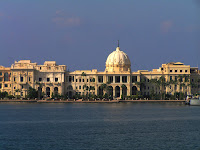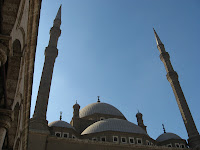
 The land that gave birth to the first great civilisation needs little introduction. The pyramids, the minarets, the Nile – the scope of Egypt is magnificent.
The land that gave birth to the first great civilisation needs little introduction. The pyramids, the minarets, the Nile – the scope of Egypt is magnificent.Visitors are surprised to discover that those legendary pyramids are merely the tip of the archaeological iceberg. Pharaonic nations, ancient Greeks, Romans, Christians and Arab dynasties have all played their part in fashioning Egypt’s embarrassment of architectural wealth.
Cairo’s chaos whirrs around a medieval core that has remained unchanged since the founding days of Islam. Upriver, Luxor, the site of ancient Thebes, is lined with warrens of opulent burial chambers and boasts some of the most formidable monuments in all antiquity. Further south at Aswan, even more geometrically imposing temples write a testament to the power of archaic gods and omnipotent pharaohs. It is here that the Nile is best explored by ancient sail, on a felucca (Egyptian sailing boat) at the hands of the prevailing currents and winds.
 Out west, Egypt’s ocean of sand stretches infinitely to the Sahara, with a handful of oases feeding solitary islands of green. Hivelike, medieval fortresses cower out here, interspersed with bubbling springs and ghostly rock formations. Meanwhile, the deep, crystal waters of the Red Sea lie brilliantly awash in coral, surrounded by an aquatic frenzy of underwater life. In the deserts of Sinai’s interior, visitors can climb the mount where God had word with Moses, and spend their remaining days in halcyon bliss at coastal Dahab’s backpacker Shangri-La.Show in Lonely Planet
Out west, Egypt’s ocean of sand stretches infinitely to the Sahara, with a handful of oases feeding solitary islands of green. Hivelike, medieval fortresses cower out here, interspersed with bubbling springs and ghostly rock formations. Meanwhile, the deep, crystal waters of the Red Sea lie brilliantly awash in coral, surrounded by an aquatic frenzy of underwater life. In the deserts of Sinai’s interior, visitors can climb the mount where God had word with Moses, and spend their remaining days in halcyon bliss at coastal Dahab’s backpacker Shangri-La.Show in Lonely Planet Ready to go? Our recommended tours make it easy:
Ready to go? Our recommended tours make it easy:






















